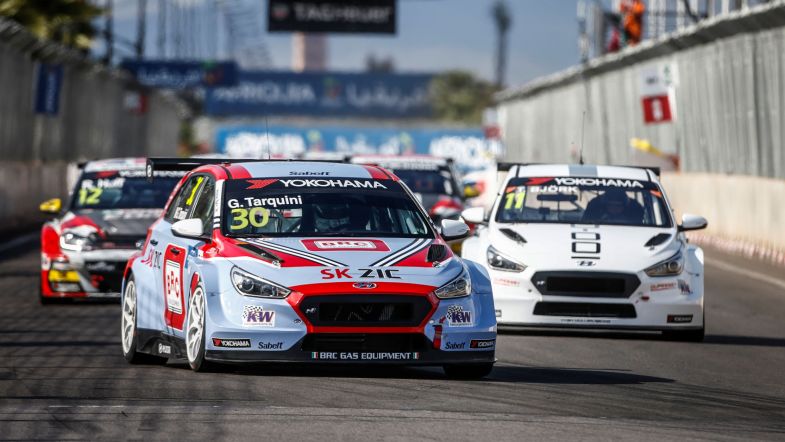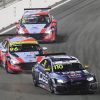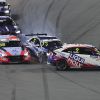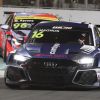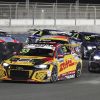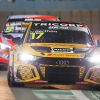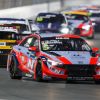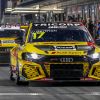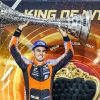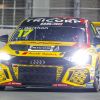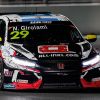Hyundai drivers call for no rash BoP changes after Morocco
BRC Racing Team and YMR drivers Gabriele Tarquini and Thed Björk have said they hope that no rash decisions are made to change the Balance of Performance, levels, after the Hyundai i30 N TCRs effectively dominated proceedings at the Marrakech street circuit.
Three of the four Hyundais entered for the race qualified 1-2-3 on Saturday, with Tarquini going on to win Race 1 ahead of Björk, while all four locked out the top spots in Sunday’s qualifying session, with Tarquini going on to win the non-reversed grid race ahead of Yvan Muller and Thed Björk’s Hyundais.
Speaking after the race, Tarquini said: “The BoP went out just before the first race, and here the Hyundai was the car to beat on this track. It’s probably not a normal track and we must wait for Budapest and just see if the Hyundai again will be the car to beat, as we are not sure about this. The car here was working very, very well and I was very happy with my Hyundai i30 N TCR.”
Björk concurred, saying the Moroccan street track’s nature often springs surprise results, with Honda having been the car to have at Marrakech in the last two years, even against the might of the factory Citroëns in 2016.
“If you look at last year when we came here, the Volvo was quite good but you could see Honda was really strong here, as it was also in Vila Real and some other places. So, I agree with Gabriele, let’s see what happens next. The car felt very good for me like it was so let’s see how it goes.”
Race 2 winner Jean-Karl Vernay was less convinced, driving the Audi RS 3 LMS which carries an additional 10kg in BoP weight over the Hyundais and Volkswagens.
“Obviously, the Hyundai was really quick,” said Vernay.
“The two teams are professional teams with awesome drivers and lots of titles, so it’s going to be difficult, but for sure, the Hyundai were a bit quicker than all the other brands.
“I hope we won’t have to wait until Budapest and we will have a change before then because the gap was quite big to the other brands. I have a boss, his name is Chris Reinke and he has to take care about that. I’m the driver, I just have to focus on driving the car 100 per cent, that’s all.”
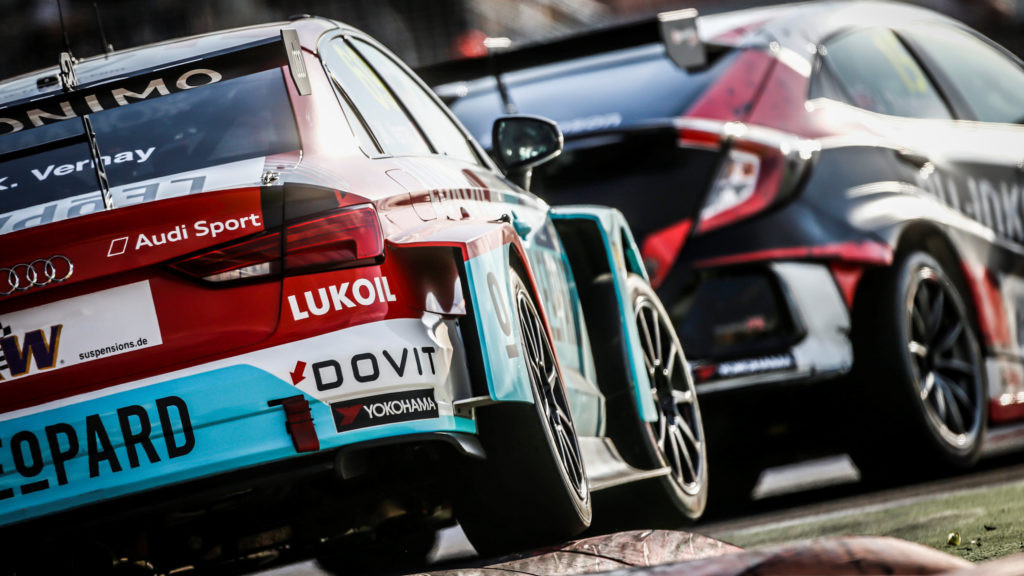
Another factor to consider in the weight calculations will be compensation weight, which comes into effect at the third round of the championship in Germany, which with Hyundai setting the pole position times and fastest laps in two of the three races, means the South Korean cars are likely to run heavier than their rivals in Germany.
The two-layer system for 2018 sees both the WSC and FIA derived BoP applied separately to the WTCC’s traditional compensation weight calculation, which hands a maximum of 60kg to the fastest model, which all cars have to carry for the first two race meetings.
“It may be that the BoP is actually OK,” said Vernay’s team-mate Gordon Shedden to TouringCarTimes. “But then you need to adjust it on the weight, because if you took 60kg out of my car, I’m sure I could probably be racing against the Hyundais.”
The WTCR promoter Francois Ribeiro explained the presence of the compensation weight system, and why it was chosen to retain it over the original plan to bring in a success ballast system as used in the TCR series.
“The FIA made a simulation and strongly recommended that compensation weight over driver-based success ballast was the way to go,” said WTCR promoter Francois Ribeiro to TouringCarTimes.
“My initial idea was a mix of compensation weight and success ballast, but one could conflict with each other so we decided to keep going with what we know.”
